Why is a two-hour postprandial blood glucose higher than a one-hour postprandial blood glucose?
Why is a two-hour postprandial blood glucose higher than a one-hour postprandial blood glucose? 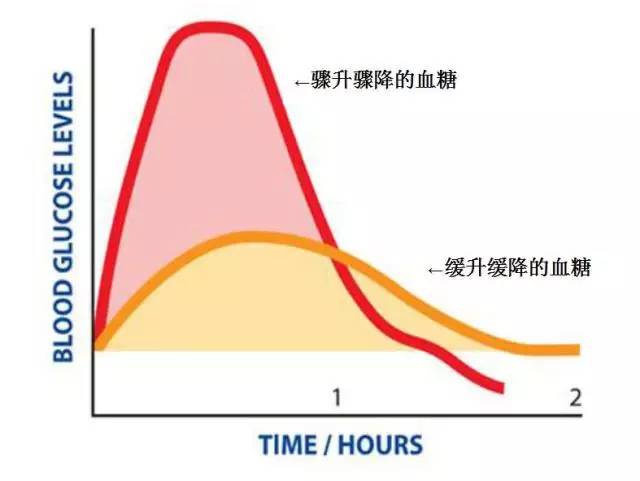
In a state of normal pancreatic function in the body, theBlood glucose at 2 hours after a meal should be lower than blood glucose at 1 hour after a meal. Normal values for blood glucose are 3.9 to 6.1 for fasting; 1-hour postprandial blood glucose values are normally 7.8 to 9.0, with peaks less than 11.1; and 2 hours postprandial values should be less than 7.8.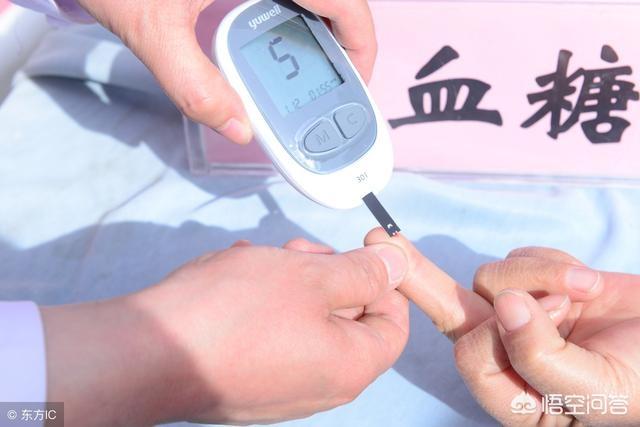
If the 2-hour postprandial blood glucose is higher than the 1-hour postprandial blood glucose, it indicates that pancreatic islet function may be impaired. This is because postprandial blood glucose actually reflects the reserve function of the B cells of the pancreas. That is, after the first bite of food is consumed, the B cells in the pancreas are stimulated to begin secreting insulin, and blood glucose increases when food begins to be absorbed, but as insulin is secreted, theIt should drop to near fasting levels 2 hours after a meal.
Normal blood glucose peaks should occur at 1 hour after a meal, and if blood glucose values are higher at 2 hours after a meal than at 1 hour, then there are two possible causes.1. Poor reserve function of B cells, cannot secrete insulin in response to changes in blood glucose.2. B cells secrete insulin normally, butInsulin resistance in peripheral tissues.. Both results show elevated blood glucose, indicating that the patient has abnormal glucose metabolism.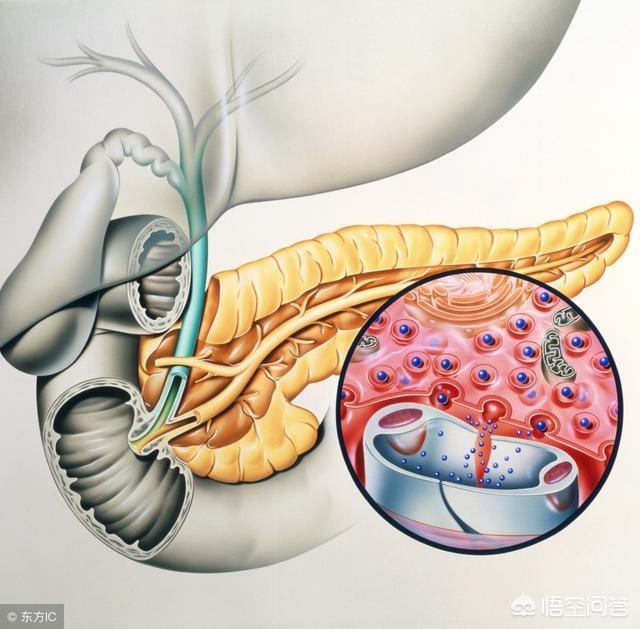
Many diabetic patients only focus on fasting blood sugar, often ignoring the postprandial blood sugar. In fact, postprandial blood glucose is a very important indicator, three meals a day, postprandial blood glucose will have a long time effect on the human body.If postprandial glucose is greater than 11.1, chronic complications such as fundopathy, renal insufficiency, and neuroinflammation are likely to occurThe impact of postprandial hyperglycemia on blood pressure and cardiovascular health is more pronounced at younger ages. And the younger you are, the more pronounced the blood pressure and cardiovascular effects of postprandial hyperglycemia become.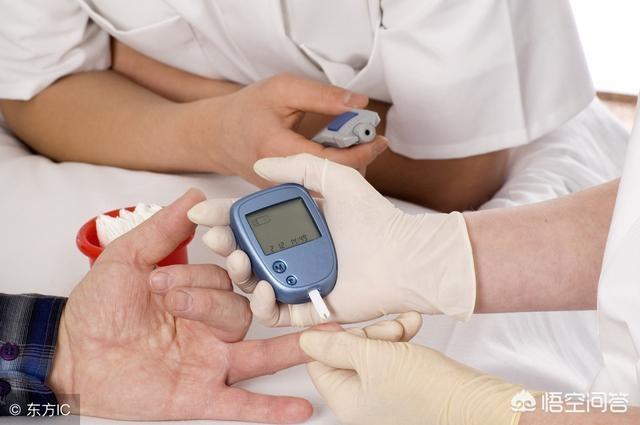
Monitoring blood glucose 2 hours after meal can better reflect the eating and medication of diabetic patients than fasting blood glucose, which is important for adjusting recipes and medication, which cannot be replaced by fasting blood glucose. If the 2-hour postprandial blood glucose is too high, it is recommended to find an endocrinologist for detailed examination.Adding metformin with acarbose before meals helps control postprandial hyperglycemia.
I am Pharmacist Wazi, welcome to follow me and let me be the pharmacist by your side!
Does this happen more often? This question should be explained at the level of endocrine expertise, can it be explained by the difference in peak glucose levels of different foods? Can it be explained by the Sumuje phenomenon? Can it be explained by the current endocrinology understanding of the pattern of blood glucose changes?
It may be worth thinking outside of the endocrine disciplines and thinking in terms of gastric dynamics in gastroenterology: the food stays in the stomach, the stomach absorbs very little of the food, the unenriched carbohydrates, fats, proteins basically absorbed in the small intestine. If due to pathologic: pyloric stenosis, incomplete obstruction, etc., functional; poor gastric peristalsis or functional dyspepsia, etc., both cases will make the food into the intestinal tract speed becomes slow. Thus the conversion to glucose after absorption through the small intestine one hour after the menu is definitely lower than two hours after the menu, because the gastric emptying time is delayed, and the absorption will be similarly delayed.
Food is absorbed into the bloodstream through the small intestine and the pancreas begins to secrete insulin. Insulin is the only hormone in the body that lowers blood glucose and the only hormone that simultaneously promotes the synthesis of glycogen, fat, and protein. Insulin promotes the uptake and utilization of glucose by tissue cells throughout the body and inhibits the breakdown of glycogen and glycogen isomerization, therefore, insulin has the effect of lowering blood glucose.
Do you think there is any reason for such an explanation? Clinically speaking, some people's blood glucose two hours after the menu is still 7-8mmoI/L, and 2.5 hours later, the test is less than 6mmoI/L. This kind of people tend to have low glycated hemoglobin or even lower than fasting blood glucose (the dawn phenomenon of blood glucose, etc.), which is caused by the gastric dysfunction or the decrease of insulin secretion stress? However, it is not easy to explain with endocrine knowledge that the two-hour blood glucose after the menu is significantly higher than the one-hour blood glucose.
Encounter fasting blood glucose is not high but two hours after the menu blood glucose value is high, while the glycated hemoglobin is less than 6 people are really not rare, these people regardless of not enough diabetes diagnosis of the gold standard, but it does reflect the insulin stress secretion disorders have been, should be controlled to eat the total number of calories, body weight and increase the movement of not make their own hat. That's why glycosylated hemoglobin should be the most important indicator for diabetics.
2018.6.4
Thanks for the invitation!One hour after a meal the food is not yet digested and absorbed, so it does not bring about a dramatic rise in blood sugar. Two or two hours is when the absorption of food is at its peak, so blood sugar is higher.
In general, the greater the postprandial blood glucose elevation, the more pronounced the patient's self-perceived diabetes symptoms. Studies have shown that2 h postprandial blood glucose correlates with cardiovascular morbidity and mortalityThe prevention of 2-h postprandial blood glucose increases can not only reduce the incidence of chronic complications of diabetes and mortality, but also reduce potential medical costs. Preventing the 2-h postprandial increase in blood glucose would not only reduce the incidence of chronic diabetic complications and mortality later in life, but would also reduce potential health care costs.
A common response to this condition in the past has been to increase the amount of insulin or to increase the amount of oral hypoglycemic agents, but this treatment is not effective and often results in hypoglycemia in the patient.
A steep rise in blood glucose two hours after a meal indicates that the body has an internal drive to raise blood glucose. Based on the documentation of the Sumuje phenomenon and the results of this data testing, this elevated blood glucoseRelief should generally not be achieved by increasing glucose-lowering medication, but by reducing the previous dose or by adding a meal. Eating a meal prevents hunger or hypoglycemic stimuli, which in turn stabilizes postprandial blood glucose. This has a mitigating effect on elevated blood glucose caused by excessive insulin or glucose-lowering medication dosage In cases where nutritional interventions are ineffective, other modalities are used to address the problem.
Under normal circumstances, the insulin secreted by the body has a great relationship with eating, in general, blood glucose will increase after eating, the body will secrete insulin to control blood glucose, normally blood glucose peaks between half an hour and one hour after a meal, and then begins to decline, and the blood glucose level is gradually stabilized after two hours, two hours after a meal should be lower than the postprandial one-hour postprandial blood glucose, and if the two hours after a meal is higher than the postprandial one-hour blood glucose, the possible reasons are related to the food you eat, and may also be related to the use of glucose-lowering medications. If your 2-hour postprandial blood glucose is higher than your 1-hour postprandial blood glucose, the possible causes are related to the food you ate or the hypoglycemic medication you are using. If your stomach digests slowly, and you eat different kinds of food, the rate of elevation of blood glucose is not exactly the same, then it can also cause the occurrence of two-hour postprandial blood glucose higher than one-hour postprandial blood glucose, and there is also a possibility of the occurrence of insulin resistance in the peripheral tissues of the diabetic patient, which can also cause the blood glucose can be significantly elevated at two hours after the meal, and then you need to adjust the glucose-lowering medicines to prevent the insulin resistance from occurs and facilitates the glucose-lowering drugs to work well.
Follow the headline number of "medical catechism", more health Q&A easy to see!
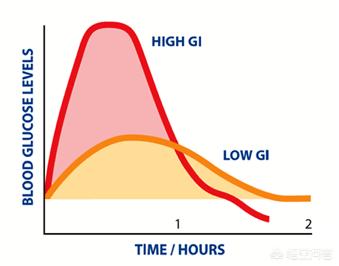
I'm not sure where you're getting your conclusions from. Normally, blood sugar two hours after a meal is lower than blood sugar one hour after a meal.
The situation you describe could be the result of the following
1. Emotional excitement, or encountering happy events, etc.Stimulates increased adrenaline production and elevated blood sugar.
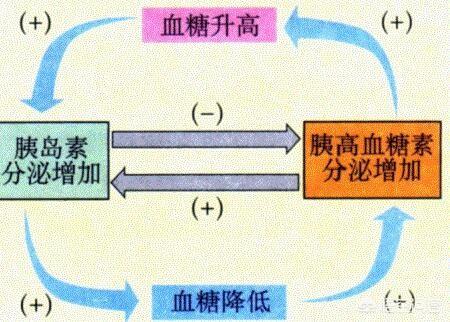
2.During exercise, cold, fatigue and other kinds of stress, the body's anti-insulin hormones, such as growth hormone, adrenaline, adrenocorticotropic hormone and glucagon secretion increases, accelerating glycogenolysis and blood glucose rises.
3.Blood glucose rises when insulin resistance is developed.
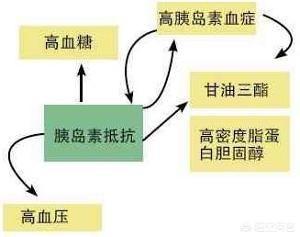
胰Insulin resistance is defined as a decrease in the efficiency of insulin to promote glucose uptake and utilization for various reasons, and the body compensates by secreting too much insulin to generatehyperinsulinemiato maintain blood glucose stability. Insulin resistance predisposes to metabolic syndrome andType 2 diabetes。
Dr. Kami Kamuchi;
Answers are for informational purposes only;
Feel free to follow and leave a comment;
First of all, with regard to the question itself, "two hours after a meal" and "one hour after a meal" blood glucose, I think you're asking about the test that we often refer to as the diagnostic test for "diabetes" - the "oral glucose tolerance test", also known as the "OGTT test". -The Oral Glucose Tolerance Test, also known as the OGTT: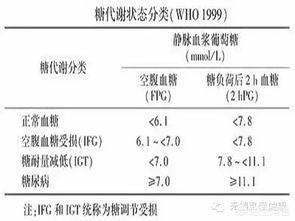
The normal standard is the measurement of venous serum glucose at half an hour, one hour, two hours and three hours after fasting and oral administration of 75 g of anhydrous glucose (or), respectively, which is the standard method of diagnosis of diabetes mellitus as well as evaluation of the individual's ability to regulate blood glucose, and to understand the function of pancreatic islet cell beta.
For "Why is the two-hour postprandial glucose higher than the one-hour postprandial glucose?"The answer to this question is that first of all, Dr. May wants to tell you the following:
Normal Glycemic Curve: Normal people are able to regulate their own glucose intake and maintain their blood glucose at a certain level, which is often referred to as "Glucose Tolerance Abnormality";
When the body's insulin resistance or absolute or relative secretion is insufficient, the body's ability to regulate its own blood glucose is reduced, and when it is not serious enough to diagnose diabetes, we call it "abnormal glucose quantity", which can be considered as the pre-diabetes stage;
When the body's insulin resistance or absolute or relative insufficiency of secretion is further aggravated, the body's ability to regulate its own blood glucose is reduced, and the diagnostic criteria for diabetes are met, we call it "diabetes";
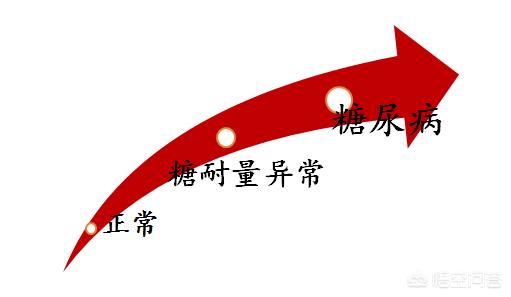 (The figure represents the gradual progression from normal to diabetes)
(The figure represents the gradual progression from normal to diabetes)
4. Normal blood glucose is not static and fluctuates at different times of the day and under the influence of food intake, but generally does not change much;
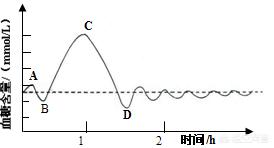
(Glycemic profile of a normal person)
From this graph, we can see that there is a transient rise in blood sugar after eating, usually in the30--60 minutes to peak, but blood glucose generally does not exceed about 9 mmol/l; as elevated blood glucose stimulates the body's insulin production and lowers blood glucose in theAfter 2 hours, blood glucose is almost back to the fasting level.The insulin levels in the body will also drop, keeping the blood sugar in the normal range;
5. insulin in normal people is likewise not static in theDifferent times (related to the physiological cycle of hormones) and subject to feeding (or blood sugar, if you will)The impact of this fluctuates, but generally changes little;
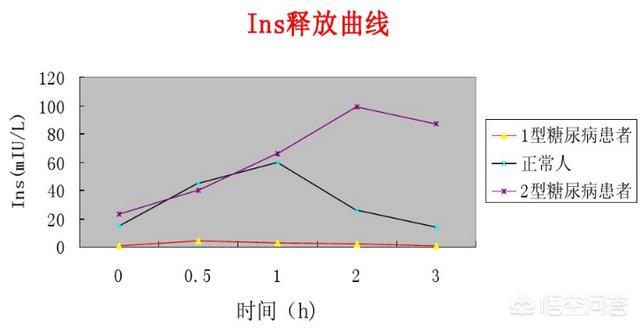
(The graph is an experimental curve of insulin release)
From this graph we can see that insulin gradually increases with time after eating in normal people, which peaks at about 1 hour (guidelines say up to 5 times more than when fasting).It gradually decreases after the2-3 hours to return to fasting levels;
And finally, "Why is the two-hour postprandial glucose higher than the one-hour postprandial glucose?"
Normal people's insulin is mainly the body's blood glucose level control, elevated blood glucose stimulates insulin secretion, under normal circumstances after eating blood glucose rises gradually, as blood glucose rises to stimulate insulin secretion, gradually around 1 hour blood glucose and insulin secretion have reached the peak, blood glucose can not be further risen ((controlled by the body's glucose regulation mechanism), after which blood glucose gradually decreases with insulin around the same time that insulin levels gradually decrease.Until about 2-3 hours both reach steady state (fasting state), so it is normal to say that blood glucose is generally higher at 1 hour after a meal than at 2 hours;
- In addition, for patients with diabetes or abnormal glucose tolerance, theInsulin dysfunction, with delayed release of insulin or insufficient insulin secretion, and similarly delayed peaks in postprandial glucose blood glucose, with irregular peak times, which is mainly related to the severity of impaired pancreatic islet function;
- Therefore, clinically, we use OGTT in patients with suspected diabetes mellitus, and at the same time, we will improve the insulin release test to further evaluate the islet function;
Follow "Dr. Shen Nei Xiaomei" for more health information!
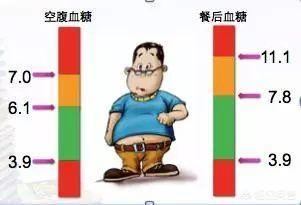
It is still quite possible for a two-hour postprandial glucose to be higher than a one-hour postprandial glucose, theThis is mainly due to four factors: gastric digestion and absorption, diet, exercise, and medication.
gastric digestion and absorption
Some diabetics have poor blood sugar control, which causes gastroparesis, or are inherently slow to digest and absorb. This can cause meal two blood sugar to be higher than meal one blood sugar.
Treatment: Strictly control blood sugar to avoid aggravating gastroparesis. Pay attention to stomach nourishment in diet, avoid eating rough, stimulating, cold and cold foods, eat regularly and avoid overeating.
catering
There are foods that are digested and absorbed quickly, and there are foods that are digested and absorbed slowly, especially foods that are high in fat and protein, which are digested and absorbed more slowly, like eating a barbecue, which can affect blood sugar for up to 12-24 hours, which can cause meal two blood sugar to be higher than meal one blood sugar.
Treatment: Adjust the diet structure, which is good for the body. Otherwise, it will aggravate the burden on the gastrointestinal tract and liver.
campaigns
If you exercise before a meal, it will have an effect on your blood sugar after the meal. However, the time and intensity of the effect is not the same, so some people have higher blood sugar on meal two than on meal one.
Treatment: You can exercise after meals, which is also good for controlling blood sugar after meals.
veterinary drug
Some medications that delay postprandial glucose, as well as poorly coinciding peak insulin action with peak food glucose elevation, can cause meal 2 blood glucose to be higher than meal 1 blood glucose.
Treatment: It is recommended to consult a medical professional to adjust the treatment plan.
If you have any questions, you can leave them in the comments section and I'll respond when I see them.
The above answer is provided by Ms. Song Mingyue, a registered dietitian of MicroSugar
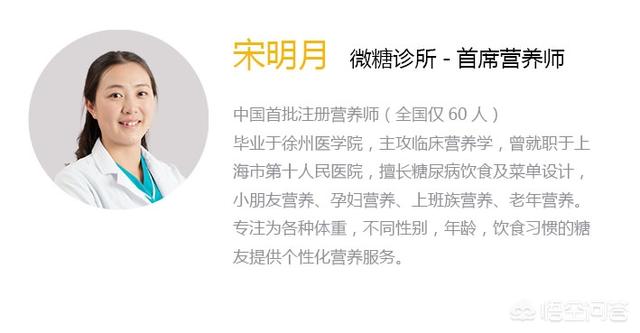
Excluding measurement errors and the effects of injections and medications, there are several situations in which meal 2 blood glucose is higher than meal 1 blood glucose:
1. Eat vegetables before eating staple and meat foods (this is what the diabetes dietary guidelines call for).
If the vegetables are with bitter flavor, like bitter melon, wild vegetables, will inhibit the pancreas less secretion of insulin, and itself contains simple sugar is not high, meal one blood glucose will not rise too much, and wait until the main food after digestion, absorption (especially coarse food, digestion and absorption of slow) blood glucose value of a large number of increased, will make meal two blood glucose measurements are higher than meal one blood glucose value.
2. Eating toxic food will start the body's autoimmune function, insulin resistance arises, pancreatic islet B cells stop secretion of insulin, A cells to step up the secretion of glucagon, which will make the meal two blood glucose value is higher than the meal one blood glucose value.
3. Poor function of the pancreas, the total amount of insulin secretion is insufficient, the first eaten sugar to insulin consumption, after digestion and absorption of sugar, almost no insulin, can only be in the form of blood glucose, so that the blood glucose value increases, so that the meal two blood glucose value is higher than the meal one blood glucose value.
......
It seems like this is different from the way diabetics' blood sugar fluctuates? Under normal circumstances, with the prolongation of the time of carbohydrate intake, the blood glucose value should be gradually reduced, of course, this and the detection of fasting blood glucose, 2h postprandial blood glucose is the same idea; and the netizen appeared in this case, the problem in the end out of where? This makes an old diabetic a little bit puzzled (may also be the reason for the lack of professional knowledge)? Or the blood glucose meter used before and after the test is not the same blood glucose meter; or the accuracy of the blood glucose meter used is not high, resulting in too large a test error; or due to non-compliance in the blood glucose before and after the test process, such as the cleanliness of the finger, the contamination of the alcohol cotton ball, wet and dry conditions; or did not choose the same finger position; or before and after the inconsistency of the amount of blood collected to cause errors; or test paper problems, and so on. Of course, these problems will affect the blood glucose test results; but I personally feel that the most likely cause of this situation is that the error of the blood glucose meter is too large, or the test paper problem; otherwise, this situation is mind-boggling and illogical... FYI, thanks for the invitation.
This question is considered in terms of.
ONE. Did you eat something in between. Eating something that raises sugar causes high values.
ii. Whether it is caused by improper operation. For example, for the first test, squeezing the blood out of the finger (which contains tissue fluid) with force or sterilizing alcohol that has not dried can lead to low measurements.
III. Instrument error causes, it is recommended to go to the hospital to test and then correct the instrument.
iv. If both second measurements are within 7.8 and the difference is not significant, it may be related to impaired glucose tolerance. You can go to the hospital for counseling.
This question and answer are from the site users, does not represent the position of the site, such as infringement, please contact the administrator to delete.